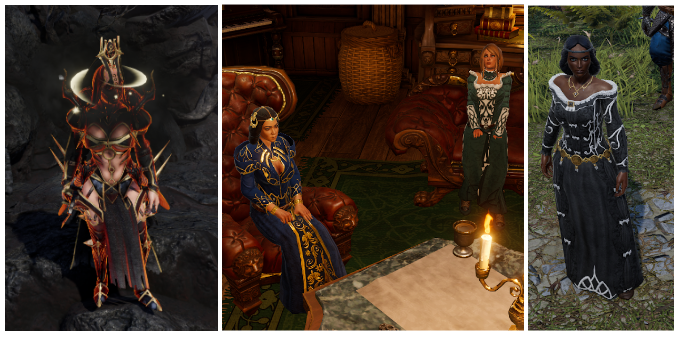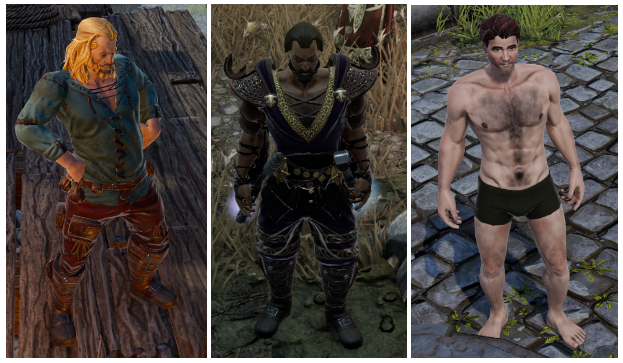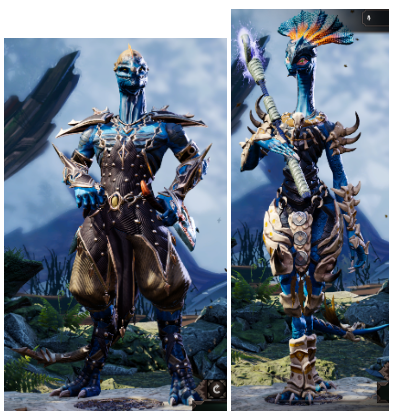By May
As I continued playing Divinity: Original Sin 2, I grew to really appreciate listening to the dialogue sequences. My friends, whom I have been playing with, both told me that they generally tend to skip the dialogue since they played it so much, but I took my time to listen to what the characters had to say. For a while, I was simply enjoying listening to the voice acting in this game, many of which I thought were really good and very captivating. It took me a while to even realize what was wrong with the voice acting as I was fixated on other aspects of this game. The more I paid attention to the dialogue, the more I realized that all the voice acting was very Eurocentric and that all the accents the characters had were mainly European.
In Astrid Ensslin’s paper “Speech Accents as Language Ideologies in Video Games,” she observes voice acting in the game Dragon Age: Origins and talks about the differences in accents between the different races in that game. She brings up an idea of a “matrix” (4) of which the game’s accents center mainly around both “Anglicized” and American matrices and that any other accent either breaks off from the matrix or just adds to it. Through this idea, I took a look at the choice of accents among the different races in this game but I didn’t notice the same exact patterns. There didn’t seem to be a specific matrix that each race stuck to and in fact every race used all sorts of accents. They all definitely remained within the Eurocentric spectrum, however.
All of the videos below are some examples of the voice acting in this game.
As you may hear, the majority of the voices are English and I did notice that most of the characters in the game have English accents. The other most common accents were Irish and Scottish. This idea really challenges the idea of what the “fantasy” genre really is. Divinity: Original Sin hasn’t been the first game to demonstrate ethnocentrism with a European bias within a fantasy world. For Ensslin, it was Dragon Age: Origins, in Mattie Brice’s article, “Speaking in Accents and the American Ethnocentrism in Video Games,” she talks about Final Fantasy, and Brian Wheeler’s article, “Why are fantasy world accents British?,” he discusses the same issue but in the film industry with examples like Lord of the Rings and Game of Thrones. There are plenty more examples which makes this issue all the more apparent.
So the question is, why are characters within fantasy worlds centered around European accents, especially the English accent? I had said before that when I first started playing Divinity, I never thought twice about this idea. I had simply accepted it as a given, as something I’m used to hearing. Most people in general don’t seem to bat an eye to this issue. This shows a problem of personal bias and how much European culture is heavily ingrained within our ideas of the fantasy world despite it being an imaginary genre. Then how do we move away from this problem? Much of culture today has been working harder on diversity and inclusion and within film and video games, there has been a push for more racial and gender diversity especially. It is through this push, that we need to discuss in further detail our personal biases such as Eurocentrism beyond the common ideas such as physical appearance. There are many other ways our biases become apparent that we end up not realizing and this issue I brought up is a good example of one.
Works Cited:
Brice, Mattie. “Speaking in Accents and the American Ethnocentrism in Video Games.” Game Developer, 17 Nov. 2011, https://www.gamedeveloper.com/design/speaking-in-accents-and-the-american-ethnocentrism-in-video-games.
Cutts, Charlotte. “The Good, the Bad and the Ugly of British Voice Acting in Games.” Destructoid, 21 Oct. 2018, https://www.destructoid.com/the-good-the-bad-and-the-ugly-of-british-voice-acting-in-games/.
Ensslin, Astrid, and Tejasvi Goorimoorthee. “Refiguring Innovation in Games.” Speech Accents as Language Ideologies in Video Games, 2017.
Wheeler, Brian. “Why Are Fantasy World Accents British?” BBC News, BBC, 30 Mar. 2012, https://www.bbc.com/news/magazine-17554816.


